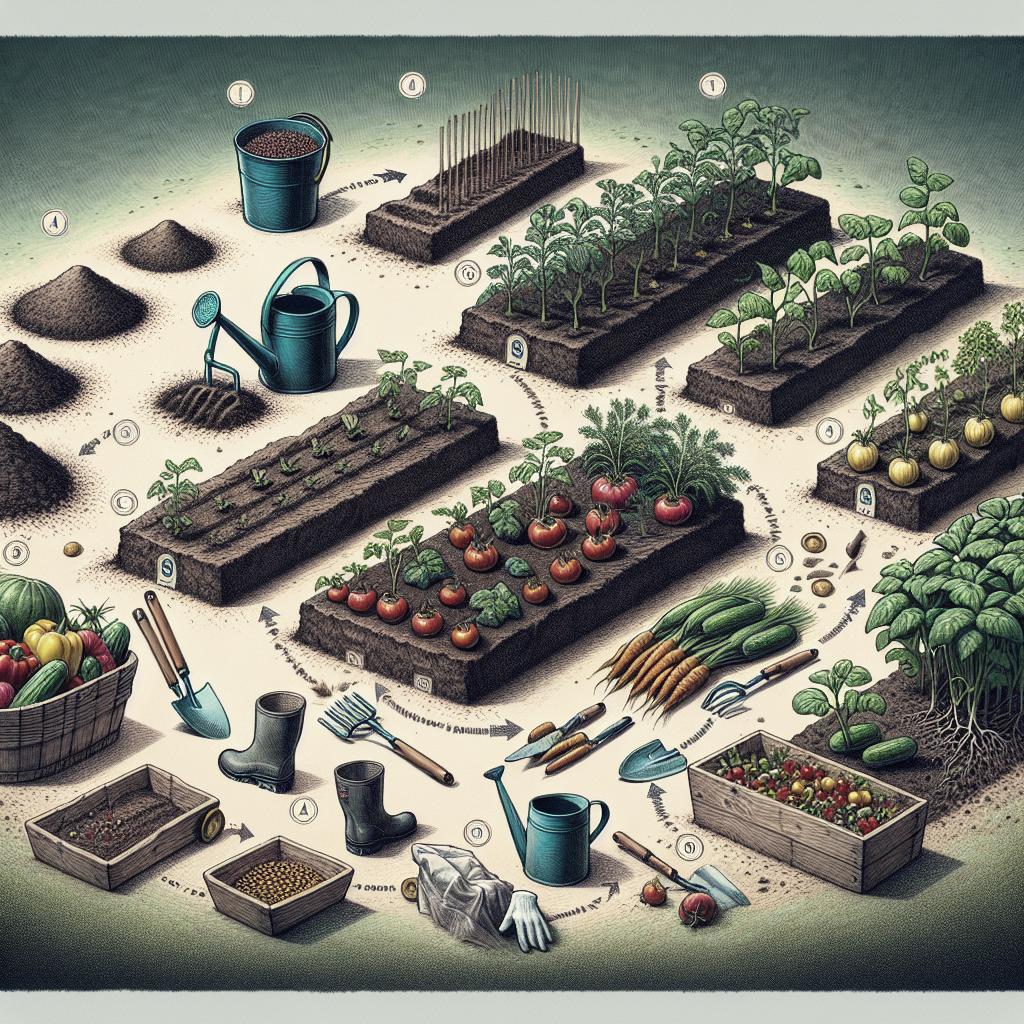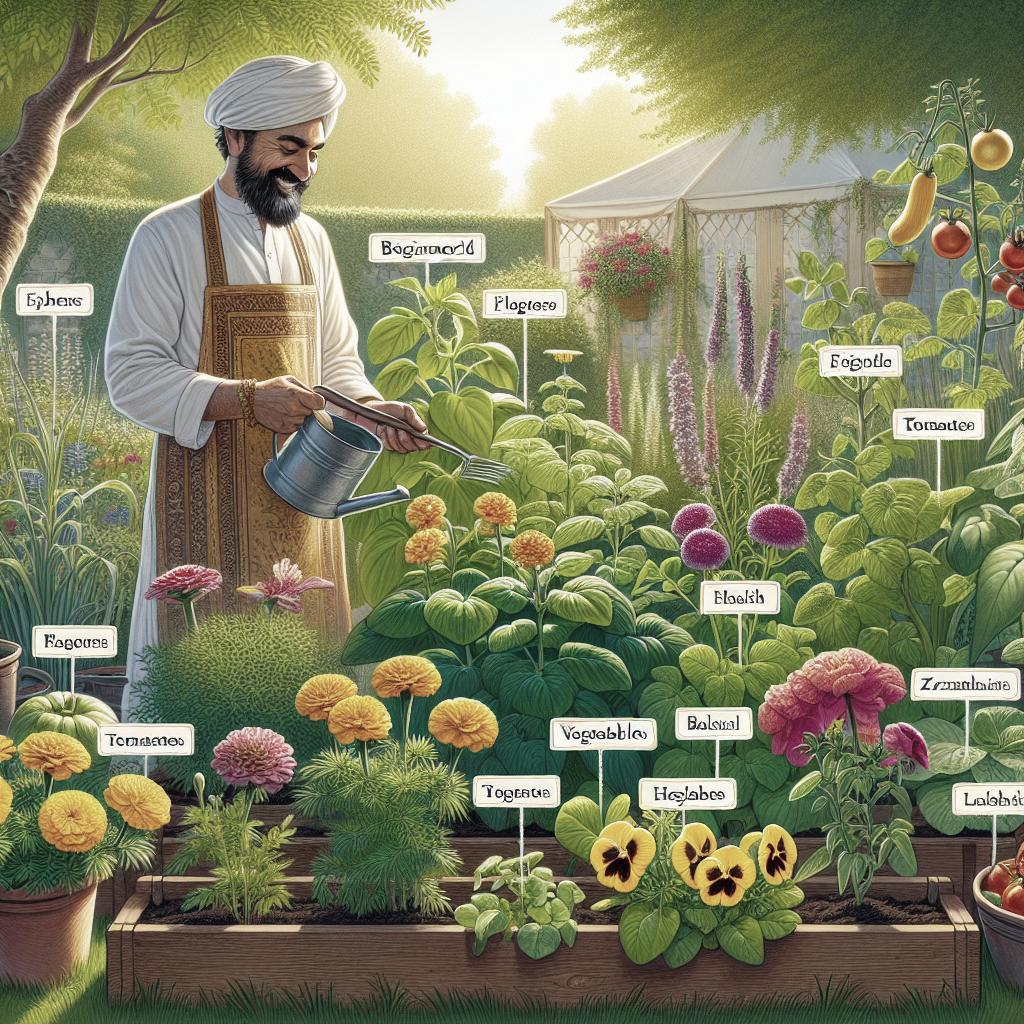“`html
How to Harvest Rainwater for Garden Use
Harvesting rainwater for garden use is a sustainable and efficient way to reduce water usage and enhance plant health. This blog post delves into various rainwater harvesting methods suitable for different garden sizes and needs. You’ll find practical guidance on using rain barrels, building cisterns, creating ponds, and facilitating natural soil irrigation. Organic matter’s role in enhancing water absorption is also explored, culminating with actionable steps to implement rainwater solutions tailored to your garden’s unique demands.
Rainwater Barrel Mathematics 101
Rain barrels are a straightforward and effective way to capture rainwater. Typically made from robust materials like plastic or metal, these barrels are fitted to downspouts, gathering runoff from rooftops. Understanding the collection potential is crucial: calculate roof area and average rainfall to estimate barrel size and number. For instance, in a region receiving 1 inch of rain, a 1,000-square-foot roof can generate approximately 600 gallons of water.
The installation process is simple, often involving just a few tools to connect the barrel to the gutter system. It’s essential to ensure a secure lid to prevent contamination and the proliferation of mosquitoes. Integrating a spigot or hose connector can optimize usability, allowing easy access to water for gardening tasks. Remember, positioning barrels elevated aids gravity-fed water flow, enhancing efficiency in watering plants.
Rain Harvesting Into Cisterns
Cisterns offer a more substantial rainwater harvesting solution, ideal for those with larger gardens or a need for greater water storage. These systems, often constructed underground, are capable of storing tens of thousands of gallons. They can be made from various materials, such as concrete, plastic, or fiberglass, each offering long-term durability and stability.
Strategically integrating cisterns into your landscape involves considering factors like location for minimal landscape disruption, ease of access, and integration with existing irrigation systems. As with rain barrels, a filtration system is vital to ensure water quality. Many gardeners incorporate pumping mechanisms to facilitate water distribution throughout expansive areas, making cisterns a feasible option for a more integrated water management system.
Rain Harvesting Into Ponds
Incorporating ponds into your rainwater harvesting strategy not only aids water conservation but also enhances your garden’s aesthetic value. Ponds serve dual purposes: storing water and fostering wildlife, creating a balanced ecosystem. Ideal for ornamental and naturalistic gardens, they offer a habitat for beneficial insects, birds, and amphibians.
Constructing a rain-fed pond involves selecting a suitable low-lying site to maximize runoff catchment. Design considerations include ensuring sufficient depth to reduce evaporation rates and acquiring the necessary permits if required by local regulations. Ponds often require a liner or natural clay seal to prevent water loss, paired with overflow strategies to manage excess rainfall. Additionally, maintenance involves managing plant growth, debris removal, and monitoring water quality.
Rain Harvesting Into Soil
Harvesting rain directly into the soil integrates natural irrigation into your garden, enhancing water retention and reducing reliance on man-made systems. Implementing techniques like berms, swales, and catchment basins can effectively channel and distribute moisture across garden beds and lawns.
Amending the landscape design to capture rainwater begins with mapping water flow, identifying areas susceptible to runoff and erosion. Deepening swales or constructing berms along these paths encourages infiltration, benefiting root systems and overall soil health. Additionally, this method can be cost-effective, with minimal infrastructure and maintenance requirements, making it appealing for organic and sustainable gardening enthusiasts.
Organic Matter: The Magic Ingredient
Organic matter in the soil plays a vital role in enhancing your garden’s water retention capacity. Compost, mulch, and green manure work wonders in improving soil structure, allowing for better moisture absorption and reducing evaporation. Furthermore, organic matter boosts soil fertility, directly benefiting plant health.
Integrating organic matter into your rainwater harvest strategy involves regular mulching around plants, adding compost to garden beds, and cultivating cover crops in off-seasons. These practices not only improve water retention but also foster a thriving microbial ecosystem, promoting nutrient-rich soil. For gardeners aiming to maximize the benefits of rainwater, organic matter serves as an indispensable tool for sustainable cultivation.
Rain Harvesting Summary
| Method | Benefits | Considerations |
|---|---|---|
| Rain Barrels | Cost-effective, easy installation, promotes water efficiency. | Limited storage, maintenance to prevent contamination. |
| Cisterns | Large storage capacity, integrates with irrigation systems. | Higher initial cost, requires planning and permits. |
| Ponds | Aesthetic appeal, wildlife habitat, large water storage. | Potential for algae, requires liner/sealant. |
| Soil Harvesting | Enhances soil hydration, sustainable, low cost. | Requires landscape design, ongoing soil management. |
| Organic Matter | Improves water retention, boosts soil health, zero emissions. | Ongoing application, labor-intensive. |
Next
As you explore these rainwater harvesting techniques, consider your garden’s specific needs and constraints. Whether opting for rain barrels, cisterns, ponds, or a combination thereof, implementing these strategies today can lead to a more sustainable and water-efficient garden tomorrow. Staying informed on advancements in rainwater collection technology, as well as local policies supporting water conservation, will further enhance your ability to create a thriving outdoor space. Dive into rainwater harvesting and let your garden flourish naturally and responsibly.
“`


